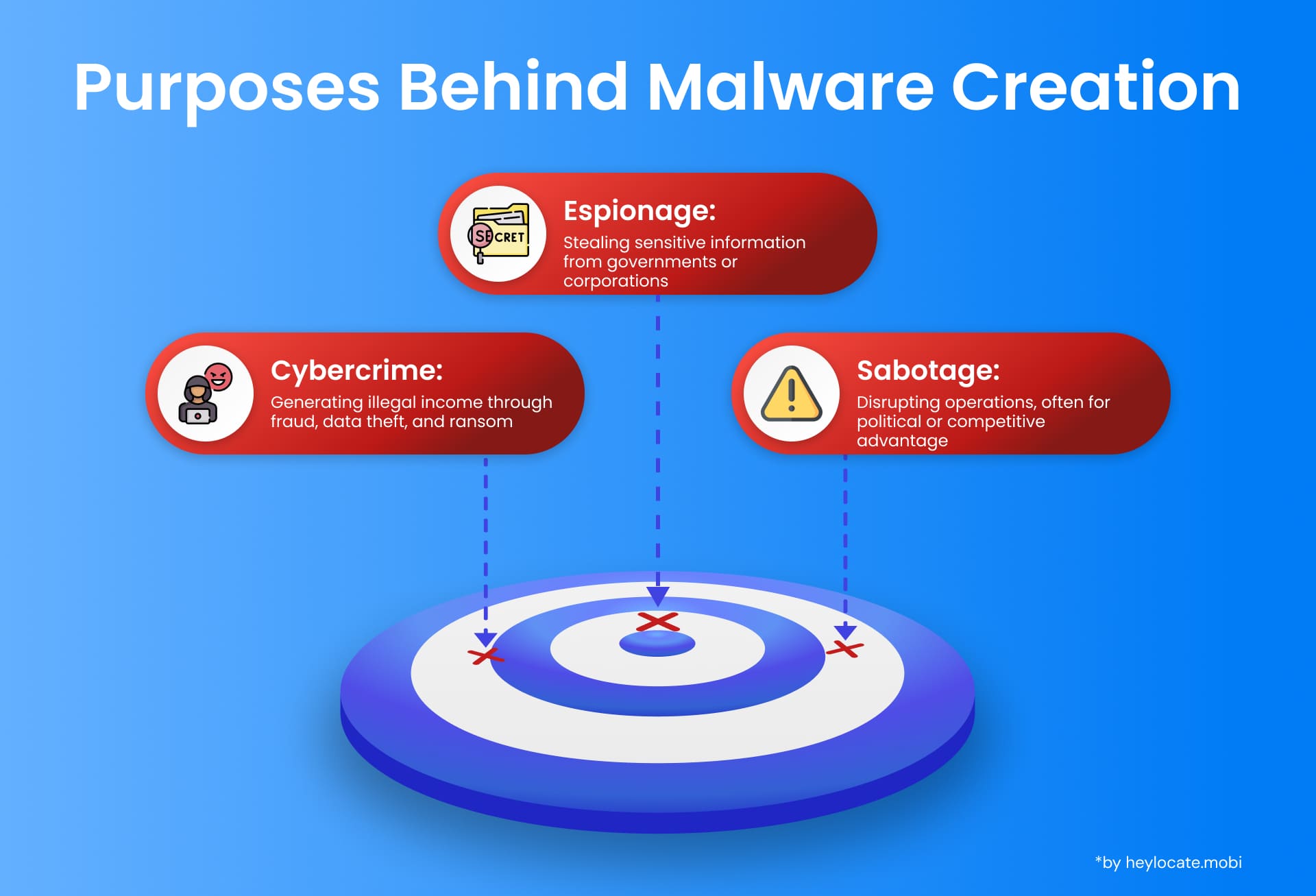Malware
What is Malware?
Malicious software, often abbreviated as malware, is a critical threat to contemporary computer systems. Perpetrators, ranging from lone hackers to organized cybercriminal syndicates and even state actors, deliberately develop this software with nefarious intent. Malware’s defining characteristics include its ability to self-replicate, its inherent malicious purpose to disrupt or compromise systems, and its adeptness at evading detection by established security measures. This pernicious software manifests in a diverse array of forms, encompassing well-known threats such as viruses, worms, Trojan horses, ransomware, spyware, adware, and keyloggers.

Types of Malware
| Viruses | Viruses are malware that can damage a computer system by replicating when an infected file is executed. This can quickly spread the virus to other files and cause extensive harm. |
| Worms | Worms are self-replicating programs that spread across networks by exploiting system or application vulnerabilities. Unlike viruses, they do not require a host file to propagate. |
| Trojan Horses | Trojans are malicious software that disguises themselves as legitimate files or programs. They deceive users into downloading or executing them by appearing harmless or desirable content and can carry out harmful activities once they infiltrate a system. |
| Spyware | Spyware is malicious software designed to collect sensitive information about users’ online activities without their knowledge or consent. It can monitor keystrokes, capture screenshots, and record browsing history, among other things. |
| Adware | Adware is malicious software that displays intrusive ads without user consent. It’s often bundled with legitimate software. |
| Keyloggers | Keyloggers are malicious software that captures and transmits user keystrokes, including sensitive information like usernames, passwords, and credit card numbers. |
Ransomware, Rootkits, and Other Malwares
- Ransomware: Extremely harmful malware that encrypts files and demands payment for decryption, typically infiltrating systems via email attachments or compromised websites.
- Rootkits: Malware that grants unauthorized access while concealing its presence, commonly used for advanced threats or creating backdoors.
- Other Malwares: Includes backdoors, providing unauthorized access, and botnets, networks of compromised computers controlled remotely by attackers.
Purposes Behind Malware Creation
Early malware often manifested as rudimentary experiments or even mischievous pranks. However, with the evolution of technology, the landscape of malware development shifted dramatically. The primary motivations behind malware creation transitioned towards far more sinister objectives, particularly cybercrime and political destabilization.

References
- Malware – Wikipedia
- What Is Malware? – Definition and Examples – Cisco
- What is malware and how cybercriminals use it | McAfee
- What is Malware? Malware Definition, Types and Protection
- What is Malware? | IBM
- Malware | What is Malware & How to Stay Protected from Malware Attacks – Palo Alto Networks
- What Is Malware? | Trellix